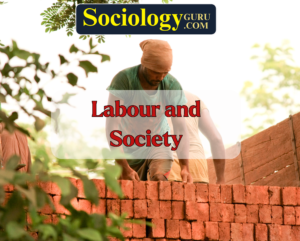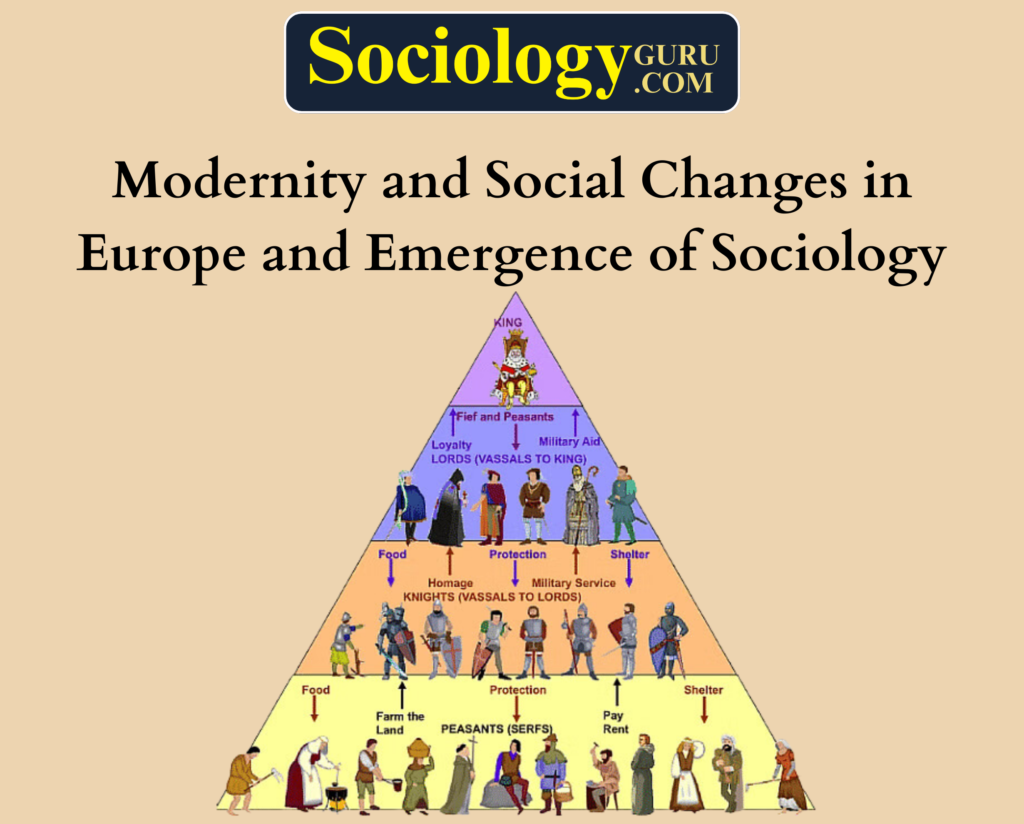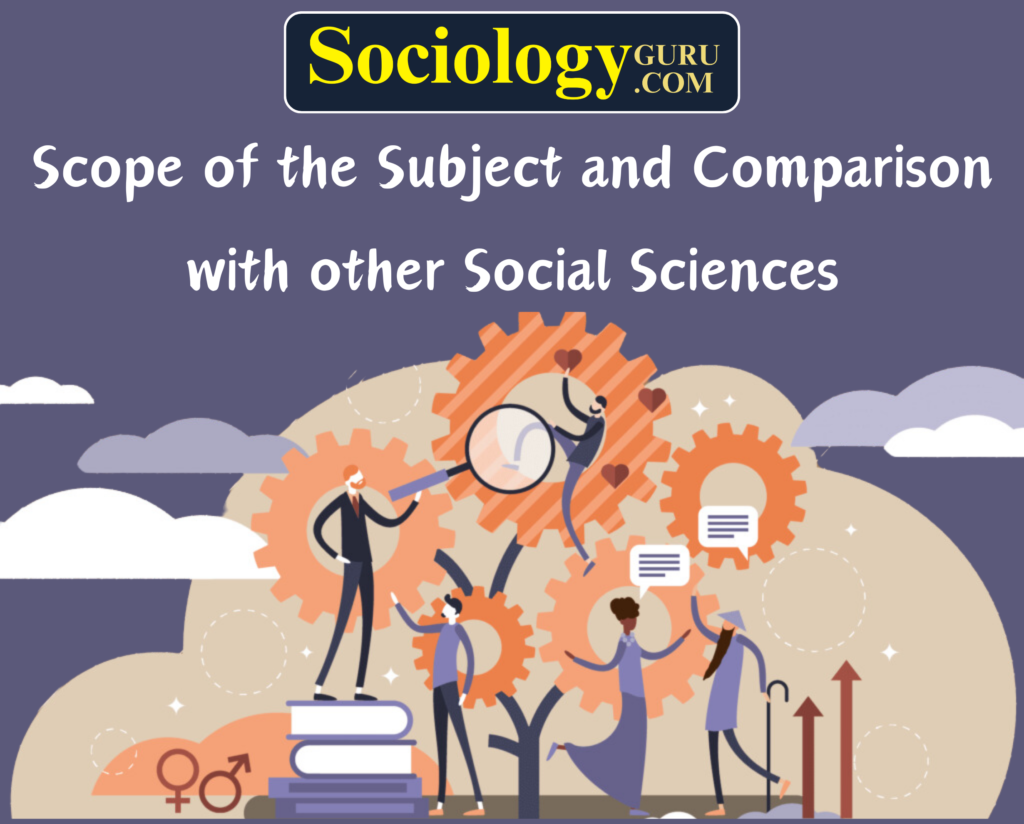Labour and Society
(Relevant for Sociology optional for UPSC CSE)
Paper-1 ,Unit-6 : Labour and Society

- Man according to Marx is a creative being .He with his labor acts upon the nature and tries to change it. Man can never get satisfied with the existing conditions and always look out for a change. Work provides the most important and vital means for man to fulfill his basic needs, his individuality and humanity. Man uses his labor which is the essence of human being. In the process of acting upon nature with the help of his labor and transforming it for his benefit man gets satisfaction. At this stage his work becomes a fully satisfying activity, encompassing both himself and the community of fellow human beings. Work through an individual activity becomes a social activity as well.
- In the process of acting upon nature man gets involved in interaction process with other human beings and gradually society moves towards the stage of complexity. In the process man engages himself in social production.
- All type of relationships and institutions emerge in society in this process with the economic process as infrastructure and other sub systems including culture, religion etc as super structure. According to Marx without culture there can be no production possible. The mode of production includes the social relations of production which are relations of domination and subordination into which human beings are either born or enter involuntarily.
- Class is an economic as well as cultural formation. Thus human beings are also in the process of social production which is a very wide concept including almost all the subsystems of society, culture, religion, economic production etc.
- The interaction between man and nature produce significant consequences as in his social production man is in constant touch with the nature. (More from Other sections of the syllabus)
Special Notes on Social determinants of Economic Development:
Economic development implies two things: Economic growth which leads to increase in production and generation of income and equitable distribution of this income among the population to improve the quality of life. Although economic development does not necessarily imply industrialization there is no historical precedent for substantial increase in percapita income without diversion of both capital and labour from agriculture. Economic development is synonymous with industrialization.
- Economic development is very much influenced by various social factors. Nation states are created with common language and culture.
- Economic development of any country hinges on the efficient employment of factors of production such as labour, land, capital and organization. There is commercialization of production with monetization of economy. The employment of factors of production is conditioned by cultural and social factors.
- The people must have the required ability, experience and knowledge to make the best use of the facilities that are made available.
- There is decline of the proportion of the working population engaged in agriculture. The technology plays very important role when appropriate social conditions are present.
- There is trend towards urbanization of society with growth of scientific knowledge. A new value system emerges which emphasis individual initiative and responsibility and enables the individual to function without any control.
- The exclusiveness of clan, kin or caste breaks down and provides norms of behavior suited to the secondary group type of relationship characteristic of an industrial society.
- There is widespread spread of education. The social stratification emerges based on achievement criteria and permitting occupational mobility.
Medium of Exchange:
A medium of exchange is the means by which people value and exchange goods and services. Hunting and gathering and pastoral and horticultural societies produced little surplus, and people bartered, directly exchanging one item for another. In later societies, surpluses grew and trade expanded people then developed new ways of placing values on goods and services so they could trade them.
- Although bartering continued in agricultural societies, people increasingly came to use money, a medium of exchange that places a value on items. In most places, money consisted of gold and silver coins. A coin’s weight and purity determined the amount of goods or services it could purchase.
- Toward the end of the agricultural period, currency (paper money) came into existence. Each piece of
paper represented a specific amount of gold or silver stored in a ware- house. Currency represented
stored value. Gold and silver coins continued to circulate alongside the deposit receipts and currency. - When fiat money replaced stored value, coins made of precious metals disappeared from circulation.
People considered these coins more valuable, and they were unwilling to part with them. Then as inferior metals (copper, zinc, and nickel) replaced the smaller silver coins, people began to hoard these silver coins, and they, too, disappeared from circulation. - Even without a gold standard that restricts the amount of currency issued to the amount of stored value, governments have a practical limit on the amount of paper money they can distribute.
- In general, prices increase if a government issues currency at a rate higher than the growth of its gross domestic product (GDP), the total goods and services that a country produces. This condition inflation means that each unit of currency will purchase fewer goods and services. Governments try to control inflation, for high inflation is a destabilizing influence.
- During the first part of the postindustrial society, paper money circulated freely. Paper money then
became less common, gradually being replaced by checks and credit cards. The next development was the debit card; a device that electronically withdraws the cost of an item from the cardholder’s bank account. Like the check, the debit card is a type of deposit receipt, for it transfers ownership of currency on deposit. - The latest evolution of money is e-cash, money stored on a company’s computer that can be transferred over the Internet to anyone who has an account with that company. E-cash can be used for making purchases and for paying bills.
- We can use the term e-currency to refer to the most common form of e-cash. E-currency represents an amount recorded in a government’s paper money, such as so many dollars or euros.
- The second form of e-cash is electronic gold, which represents a balance in units of gold. A transaction in e-gold is actually the transfer of ownership to a specified amount of gold that the owner has stored in a bank’s vault.
Globalization and Organization of Work:
The globalization of capitalism may be the most significant economic change in the past 100 years. According to Louis Gallambos this new global business system will change the way everyone lives and works.
- From the functionalist perspective, work is a basis of social solidarity. According to Emile Durkheim as the farmers do the same type of work; they share a similar view of the world. He used the term mechanical solidarity to refer to the sense of unity that comes from doing similar activities.
- When an agricultural society industrializes, people work at many different types of jobs. As the division of labor grows, people come to feel less solidarity with one another. As they are like the separate organs that make up the same body, Durkheim called this type of unity organic solidarity.
- This process has continued to the point that we now are developing a global division of labor as each of us now depends on workers around the globe. Corporations, with their separation of ownership and management, underlie the success of capitalism.
- We may not feel a sense of unity with one another, but the same global economic web links all of us. The globalization of capitalism has forged a new world structure. Three primary trading blocs have emerged: North and South America, dominated by the United States; Europe, dominated by Germany; and Asia, dominated by Japan and China. Functionalists stress that this new global division benefits not only the multinational giants but also the citizens of the world.
- That capitalism could become the world’s dominant economic force can be traced to a social invention called the corporation. A corporation is a business that is treated legally as a person. A corporation can make contracts, incur debts, sue and be sued. Its liabilities and obligations, however, are separate from those of its owners. One of the aspects of corporations is their separation of ownership and management. It is not the owners those who own the company’s stock who run the day-to-day affairs of the company instead, managers run the corporation. The result is the “ownership of wealth without appreciable control, and control of wealth without appreciable ownership”
- Conflict theorists stress how power is concentrated in the capitalist class. They note that global capitalism is a means by which capitalists exploit workers. From the major owners of the multinational corporations comes an inner circle. While workers lose jobs to automation, the inner circle maintains its political power and profits from the new technology. The term corporate capitalism indicates that giant corporations dominate capitalism today. Power and wealth have become so concentrated that a global superclass has arisen.
- A tool that unites and magnifies their power is interlocking directorates. Individuals serve on the board of directors of several major companies, and so do their fellow board members. Like a spider’s web that starts at the center and fans out in all directions, these overlapping memberships join the top companies into a single network. The overlapping memberships of the globe’s top multinational companies enfold their leaders into a small circle that are called the global superclass. The superclass is not only extremely wealthy but it is also extremely powerful. These people have access to the top circles of political power around the globe.

